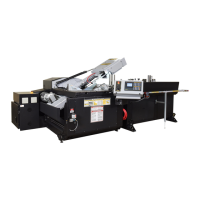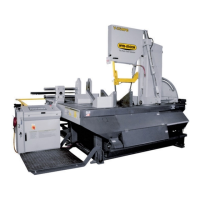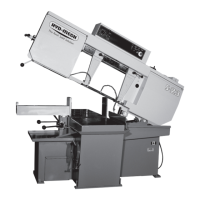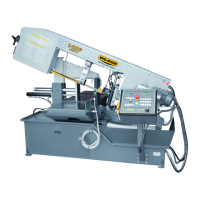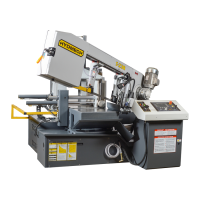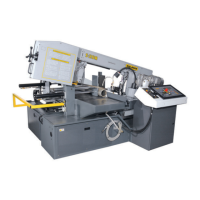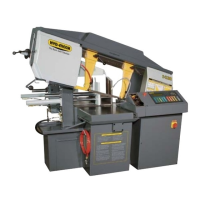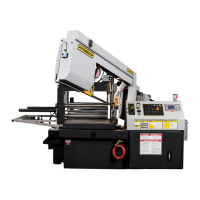2.6
BLADE BASICS
Technology is rapidly changing all aspects of production machining. Metal cuto is no exception. The advances made in
the bandsaw blade industry have denitely brought down the cost per cut, despite the three fold higher price of high tech-
nology blades. Variable pitch, bi-metal blades (like the 4/6 or 3/4 bi-metal blade supplied with the saw) last much longer,
cut faster, and more accurately than conventional carbon steel blades. In order to take advantage of the superiority of bi-
metal blades, it is critical to properly “break-in” a new blade. This is accomplished by taking two or three cuts through solid
four or ve inch diameter mild steel at an extremely slow feed rate. (It is also advisable to utilize a slow blade speed.)
These two or three slow cuts suciently lap (polish) the new blade so that it does not snag the material being cut. Proper
break-in will alleviate blade vibration, improve surface nish, accuracy, and blade life.
After “break-in”, the following six points must be closely monitored to ensure long blade life:
1. Proper blade tension should be maintained. (see Section 3, Blade Changing)
2. Generous coolant application is essential with most materials. A high quality and well mixed coolant will extend
blade life, and also increase cutting rate and quality. On those materials where coolant is undesirable for cutting, a slight
coolant ow or periodic oiling of the blade is necessary to prevent the blade from being scored by the carbide guides.
3. The stock being cut must be securely clamped in the vises.
4. The proper feed force should be chosen. (Saw Cutting Parameters: Step2)
5. The proper blade speed must be selected. (Saw Cutting parameters: Step 4)
6. The proper feed rate must be applied. (Saw Cutting Parameters: Step 5)
CUTTING PARAMETERS CHART
A full size PARAMETERS CHART is mounted on the front of the base. The chart contains ve steps for the operator to fol-
low in order to achieve optimum performance of the saw. Details of these steps are explained in detail beginning with step
1 below and on the following pages.
Saw Cutting Parameters Chart
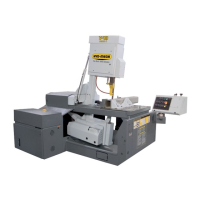
